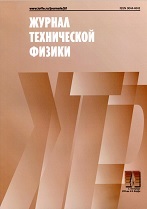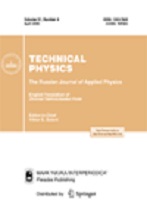|
Solids
Capabilities of magnetic pseudoresonance in studies of thin ferromagnetic films with uniaxial magnetic anisotropy
V. V. Demidova, A. E. Mefedb
a Kotel'nikov Institute of Radio Engineering and Electronics, Russian Academy of Sciences, Moscow
b Kotelnikov Institute of Radioengineering and Electronics, Fryazino Branch, Russian Academy of Sciences
Abstract:
Possibilities of magnetic pseudoresonance (a non-resonance peak of magnetic susceptibility) were studied and compared with the ferromagnetic resonance (FMR) in measuring the parameters of thin ferromagnetic films with in-plane uniaxial magnetic anisotropy. The measurements were conducted with two characteristic samples of ferromagnetic films showing this effect. A $Q$-meter operating at a frequency near 300 MHz (for pseudoresonance) and a standard $X$-band magnetic resonance spectrometer (for FMR) were used. The $Q$ -meter working at 300 MHz was shown to detect reliably the magnetic pseudoresonance in both epitaxial and polycrystalline films. It was found that the accuracy of determination of the magnetic anisotropy field and orientation of the easy magnetization axis provided by the pseudoresonance method is as good as with FMR, and in some cases the pseudoresonance method gives additional information.
Received: 08.02.2018
Citation:
V. V. Demidov, A. E. Mefed, “Capabilities of magnetic pseudoresonance in studies of thin ferromagnetic films with uniaxial magnetic anisotropy”, Zhurnal Tekhnicheskoi Fiziki, 89:1 (2019), 72–75; Tech. Phys., 64:1 (2018), 64–67
Linking options:
https://www.mathnet.ru/eng/jtf5721 https://www.mathnet.ru/eng/jtf/v89/i1/p72
|


| Statistics & downloads: |
| Abstract page: | 69 | | Full-text PDF : | 46 |
|





 Contact us:
Contact us: Terms of Use
Terms of Use
 Registration to the website
Registration to the website Logotypes
Logotypes








 Citation in format
Citation in format 